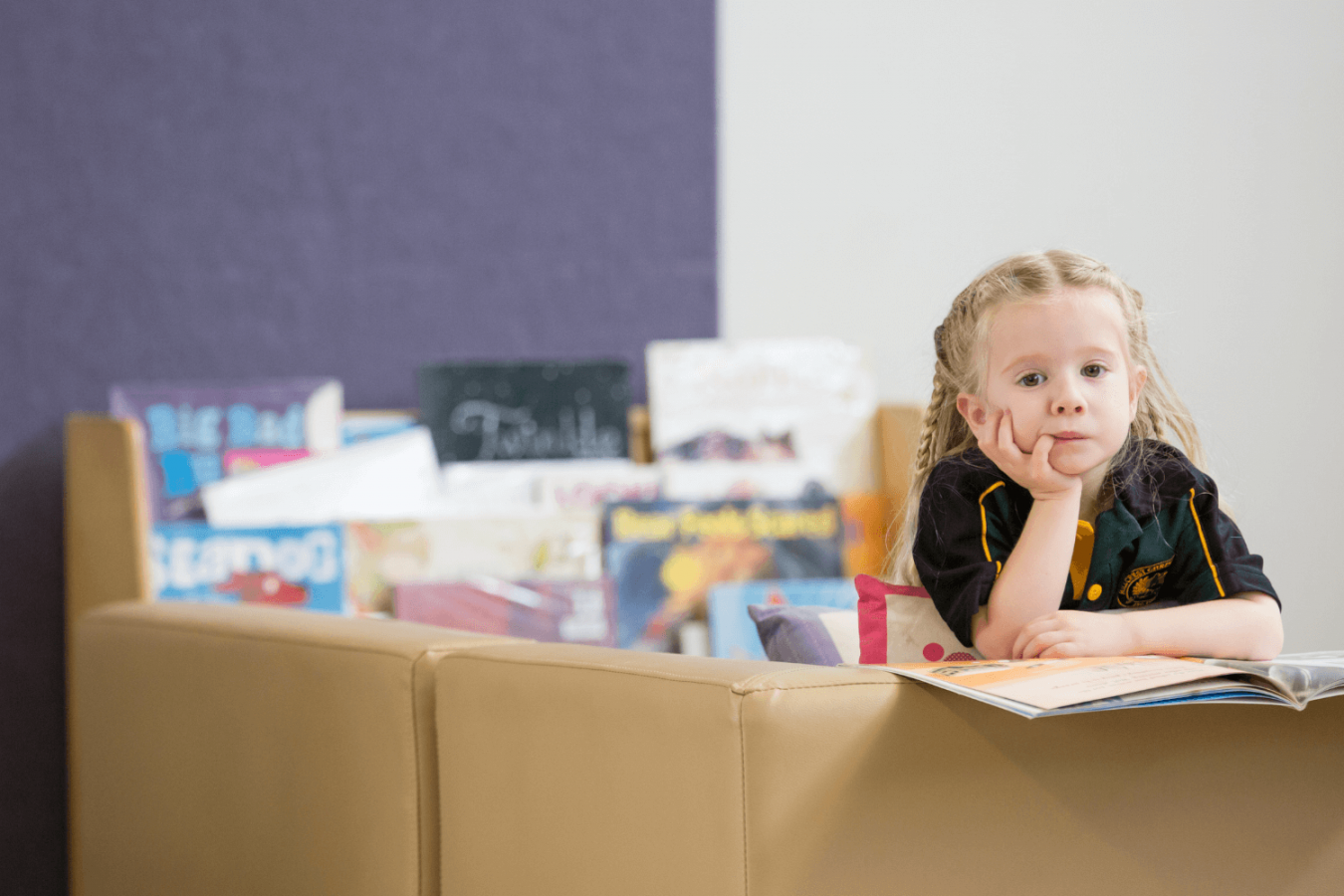
How can we help children become resilient? In this extract from his new book 9 Ways to a Resilient Child, Dr Justin Coulson writes that the late primary school years hold the key.
In early 2015, I wrote an article for an online parenting website. As their parenting expert, I am tasked with answering parenting dilemmas and providing inspiring ideas for mums or dads who are struggling. It so happened that this particular article – about resilience – struck a chord. Titled 18 ways to raise a resilient child, it was a hit. When it was shared on social media, its reach was phenomenal. A few weeks after the article was shared, I shared it again. Same result. Then a couple of months later I decided to try it again, and was amazed to see the article going even wider and reaching more people. I’ve since shared that article several times more, and time and again the response has been enormous.
I’m unconvinced that the article was particularly well written, wise or profound. But it highlighted what resilience is (for now it’s enough to say that resilience means that we bounce back from challenges and adversity, and that our developmental progress isn’t thwarted by difficult – even traumatic – circumstances), and it tapped into the importance of parents connecting with their children to build up their resilience. There is much more to building resilience than these ideas, but it seems that the idea of resilience resonates with parents who are worried that their children are somehow not coping, or may not be able to cope in the future. Parents and carers want to know how to help their children be more resilient. They ask questions like:
- Why does one child seem capable of thriving in spite of incredible odds while others crumble at the first hint of opposition or adversity?
- How is it that some children relish a challenge and a chance to learn something new – even if that means failure – while others will not try anything unless they can be assured of success?
- How can I help my child be resilient when friendships falter?
- How can I help my child stick at something for more than three lessons, or three school terms?
- What can I say to my child when he loses on the sports field or fails an exam? He seems incapable of dealing with failure.
After reading the article, one mother complained to me, ‘My daughter Corinne will be 15 years old soon. She’s a funny, empowering person – loving, caring, kind and supportive to others. She brings people together. Her coaches, teachers and family see this quality in her as unique and valuable.
‘She keeps asking me why she quits everything, why she gives up on everything.
‘She’s a swimmer. She’s been swimming since Year 2. She got to the top of her game two years ago. In order to be faster she needed to build up her leg strength but she fights it. She wants it but isn’t willing to do it.
‘In school she starts off really well then gives up and ends up submitting crappy assignments. She won’t finish reading a required book or chooses not to read it at all because she doesn’t like to read and can’t get herself to do it. She’ll just refuse to bring herself to study for a test – not all tests, but maybe something she perceives as hard or she is uninterested in. She knows she has to study and tells herself she will but never does it and gets a bad mark. She won’t put in the effort in maths. She asks me why she gives up on everything and isn’t willing to do what it takes to get what she wants or what she knows is best for her.
‘She’s stuck! When things get hard, she gives up.’
Perhaps your child gives up too quickly and easily for your liking, moaning, ‘I can’t.’ Maybe your child resists going to school because they don’t like their teacher, or because the teacher said something that upset them. Your child’s resilience may seem low because a friend rejected them, or they failed in a sporting contest or an exam, or missed an opportunity to get a job they desired.
How can we or our children ever do something great, or even mediocre, when the minutiae of family life, school life or work life gives resilience such a hammering? [In this book], we will explore the idea of resilience: what it is and how it works. We’ll consider research that shows how well our children are doing – or are not doing – and why. We’ll examine the myths that surround resilience, slaying some sacred cows in the parenting-advice world. And we will investigate what researchers have discovered really does build resilience – not just in children, but in adults as well.
A Resilience Problem?
The evidence indicates that we have a resilience problem. Why? One in nine people in Australia experience high levels of psychological distress each year. To be clear, experiencing depression, anxiety or other forms of psychological distress does not tell us whether someone is resilient. It’s how they bounce back and adapt that tells us that. However, this statistic suggests a resilience challenge because in too many instances people are being affected by mental health issues and not actually bouncing back. They are not adapting well. Instead, their mental health spiral is negative. They get stuck in rigid stinking thinking, and cannot get out of the rut. Or they find a way to get on with life, simply living with the psychological pain. If an average home and family has approximately five people, based on the numbers mentioned above, one person is experiencing high psychological distress in every two households. The numbers are significant. And so is the level of distress.
Let’s pick this apart a little more. In 2014–15, 11.7 per cent of people aged 18 years and over experienced high or very high levels of psychological distress. In a population of just over 23 million people, 3.4 million Australian adults experience depression or anxiety each year. Depression reports are at an all-time high, with 1 in 11 Australian adults reporting having depression or feelings of depression each year. And 1 in 20 Australians reported experiencing both an anxiety-related condition and a mood (affective) disorder.
Resilience Check-Up for our Kids
If Australia’s adults are struggling rather than flourishing, how are our children doing? Resilient Youth Australia is a not-for-profit group run by highly regarded Australian child and adolescent psychologist Andrew Fuller. The organisation has collected resilience data from over 90,000 Australian children in over 400 communities throughout the country. The data reveals clear and distinct patterns. In years 3–12, 43 per cent of students (47 per cent of girls and 40 per cent of boys) have good or high levels of resilience. That shows that just under half of our children aged 8 through to age 18 are in good shape. Not an ideal picture, but certainly not as bad as it might be.
This is a wide age range, though. We should expect some variability in this age group. Our children experience tremendous developmental changes from ages 8 through to 18. Think of a young Year 3 child and consider the tremendous development that needs to occur for her to become a high school graduate and young adult in a decade’s time. So many things will impact on her resilience: physical changes, neurological development, social growth and learning, academic pressures, identity, character and personality development, and more will influence resilience across this age span. So too will the various life experiences that this girl will encounter – in her family, at school, with her friends, and in a range of other settings that can help or hinder her resilience and wellbeing for her entire life.
When we examine the Resilient Youth Australia data by age, we see a distinct pattern emerging. The results show a steady drop from 59 per cent of students reporting good or high levels of resilience in primary school to a lowly 27 per cent by years 11–12. All of that is concerning – it should be higher throughout these years. Of greatest concern: adolescence seems to be a time where resilience and wellbeing are dropping – significantly.
When our children do not feel hopeful, they too often feel hopeless. Hopeless children set fewer goals. Their view of the future dims.
They perceive pathways as too challenging to traverse, or don’t even perceive pathways towards goals at all. Often they doubt themselves and their capacity to accomplish anything of value. In short, that feeling of hopelessness pervades their thinking, their emotions, their actions and their relationships. It affects their approach to school and to life. It reduces their resilience and impacts their wellbeing.
Rather than experiencing adversity and challenge and then finding effective strategies to work through the difficulties, our children are losing the fight against ‘stinking thinking’, and in too many cases they are losing their lives as well. Suicide is responsible for one-third of all deaths of young people aged 15–24 years. Suicide rates among young people are at the highest they’ve been for over a decade. And certain parts of our population are at greater risk than others. The rate of suicide among Indigenous young people is significantly higher than among non-Indigenous young people.
These concerning statistics appear consistently in studies of children and young people. It seems to have become ‘normal’ that our children struggle with adversity, experience low hope and subsequent depression, anxiety and lowered resilience. But simply because it is normal, does not mean it is either appropriate or healthy. And it certainly does not mean we should accept it. The data demonstrates that around a quarter of our children, even during the teen years, maintain high levels of resilience. This small percentage is bucking the trend. How can we make it possible for more of our children to thrive?
We must approach the late primary school years as a golden opportunity to pre-arm our children, to inoculate them against the changes that affect so many so detrimentally. This is a time where we scientists have found a second surge in neuro-development (the first surge occurs throughout infancy). As our children enter this early adolescent phase of development (ages 9–13), their brain is beginning to wire itself with changes that will potentially lead to lifelong habits and ways of being. Their identity is still remarkably malleable – and at this stage they are still open to parental influence. We have to capitalise on this critical time in powerful ways to build on the positive foundation of resilience that childhood has provided, and reduce the risks and challenges of adolescence that chip away at resilience.
The good news is that we know how to do this. We know what undermines resilience, and we know what builds resilience – in children and in adults. A great deal of it starts well before adolescence – at birth and during infancy. And there is also much that can be done as our children traverse the adolescent years that are so often rocky, challenging and in too many cases tragic.
9 Ways to a Resilient Child, by Dr Justin Coulson, published by ABC Books, rrp $29.99
For personal crisis support, you can call Lifeline 131 114 or beyondblue 1300 224 636 or visit lifeline.org.au or beyondblue.org.au.
Subscribe to The Parents Website


